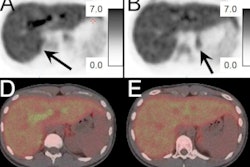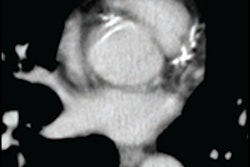
Patients with elevated LDL-C levels but with low coronary artery calcium scores (CAC) on CT angiography may have lower risk of cardiovascular disease than is generally assumed, according to a study published February 11 in JAMA Network Open.
The study results suggest that there's a way to tailor treatment for individuals with high cholesterol (≥ 190 mg/dl), wrote a team led by Dr. Martin Bødtker Mortensen, PhD, of Aarhus University Hospital in Denmark.
"[Our] findings suggest that atherosclerosis burden, including assessment of CAC, can be used to individualize treatment intensity by identifying patients who are at low risk despite having severely elevated LDL-C levels," the group wrote.
U.S. and European guidelines state that patients with high cholesterol (higher than 190 mg/dl) should be treated with statins to prevent atherosclerotic cardiovascular disease. But some studies have shown that some patients with high cholesterol don't seem to develop CAC, which suggests that treatment for high cholesterol might be better tailored.
"[Concerns] regarding a potentially high prevalence of noncalcified plaque in individuals with severe dyslipidemias ... associated with very high LDL-C levels of at least 190 mg/dl remain, despite a CAC score of 0," the group noted. "This has prevented exploring the potential value of using plaque burden and CAC for risk stratification, particularly for 'derisking' ... purposes, and of using personalized LDL-C management in these patients."
Mortensen's group sought to investigate the prevalence of CAC in patients with LDL-C levels of more than 190 mg/dl and whether the presence of calcium would affect heart attack, stroke, and death rates. The team conducted a study that included data from 23,143 symptomatic patients included in the Western Denmark Heart Registry who underwent coronary CT angiography between January 2008 and December 2017. Over four years of follow-up, 1,029 adverse cardiovascular events and deaths occurred.
Out of the total patient group, 46.3% of patients had no CAC and 53.7% had detectable plaque. Patients with cholesterol measures of at least 190 mg/dl had the lowest prevalence of CAC scores of 0 (46.2%), but of these, most (77.2%) had no coronary plaque at all.
| Prevalence of coronary plaque in patients with CAC scores of 0 on CCTA by cholesterol level | |
| Cholesterol measure | No plaque |
| Overall | 86.8% |
| < 77 mg/dl | 88.6% |
| 77-112 mg/dl | 88.4% |
| 113-154 mg/dl | 86.2% |
| 155-189 mg/dl | 85.3% |
| ≥190 mg/dl | 77.2% |
In patients with CAC scores of 0, the adverse cardiovascular event rate per 1,000 person years was 6.9% among those with LDL-C levels of 190 mg/dl or higher -- only slightly more than the overall population rate of 6.3%.
"Across the LDL-C spectrum, absence of CAC was associated with low rates of atherosclerotic cardiovascular disease and death, with increasing rates in patients with greater CAC burden," the group wrote.
The study findings open the possibility that treating patients with high cholesterol could be more tailored, according to the authors.
"[Our] results support the use of CCTA results for risk stratification ... of symptomatic patients with high LDL-C levels," Mortensen and colleagues concluded. "This is important because such individuals are universally considered to be at high risk with very low LDL-C goals that can only be achieved by treatment with statins in combination with novel therapies to lower lipid levels. Among the large proportion of patients with LDL-C levels of at least 190mg/dL who have no atherosclerotic plaque, the net benefit of such intensive treatment is questionable."





















